Understanding Chemiluminescence

Illuminating Imaginations: What is Chemiluminescence?
Chemiluminescence is a fascinating phenomenon where light is emitted as a result of a chemical reaction, rather than heat or electricity.
Illuminating Imaginations: The Science Behind Chemiluminescence
The light in chemiluminescent reactions comes from the energy released when certain molecules undergo oxidation or reduction.
Illuminating Imaginations: Safety Measures for Chemiluminescence Experiments
When working with chemiluminescent materials, it is important to wear protective eyewear and gloves, and work in a well-ventilated area.
Illuminating Imaginations: Essential Equipment for Creating Chemiluminescence
To create chemiluminescence, you will need chemicals such as luminol or hydrogen peroxide, along with a suitable activator and a fluorophore.
Illuminating Imaginations: Common Chemical Reactions for Chemiluminescence
Some common reactions that produce chemiluminescence include the reaction between luminol and hydrogen peroxide, or the oxidation of oxalate esters.
Illuminating Imaginations: Uncommon Yet Fascinating Chemiluminescent Reactions
Less commonly known chemiluminescent reactions include the reaction between luciferin and luciferase found in fireflies, or the reaction between dioxetanes and catalysts.
Illuminating Imaginations: DIY Chemiluminescence Projects for Beginners
A simple DIY project for beginners is creating glow sticks using non-toxic chemicals and a plastic tube.
Illuminating Imaginations: Advanced Chemiluminescence Experiments for Enthusiasts
For more advanced chemiluminescence experiments, one can explore the synthesis of specialized luminophores or develop custom reaction systems.
Illuminating Imaginations: Real-World Uses of Chemiluminescence
Chemiluminescence finds applications in various fields, including forensic science, medical diagnostics, and environmental monitoring.
Illuminating Imaginations: How Chemiluminescent Technology Impacts Industries
Chemiluminescent technology is used in industries such as aerospace, automotive, and entertainment for lighting and decorative purposes.
Illuminating Imaginations: Inspiring Creativity with Chemiluminescence
By exploring the world of chemiluminescence, we can inspire creativity and ignite a sense of wonder in the beauty of science.
Illuminating Imaginations: Resources for Further Learning
For further learning about chemiluminescence, resources like books, scientific journals, and online communities can provide valuable information and support.
Illuminating Imaginations: What is Chemiluminescence?

Chemiluminescence is a fascinating phenomenon where light is emitted as a result of a chemical reaction, rather than heat or electricity. The light in chemiluminescent reactions comes from the energy released when certain molecules undergo oxidation or reduction. When working with chemiluminescent materials, it is important to wear protective eyewear and gloves, and work in a well-ventilated area. To create chemiluminescence, you will need chemicals such as luminol or hydrogen peroxide, along with a suitable activator and a fluorophore. Some common reactions that produce chemiluminescence include the reaction between luminol and hydrogen peroxide, or the oxidation of oxalate esters. Less commonly known chemiluminescent reactions include the reaction between luciferin and luciferase found in fireflies, or the reaction between dioxetanes and catalysts. A simple DIY project for beginners is creating glow sticks using non-toxic chemicals and a plastic tube. For more advanced chemiluminescence experiments, one can explore the synthesis of specialized luminophores or develop custom reaction systems. Chemiluminescence finds applications in various fields, including forensic science, medical diagnostics, and environmental monitoring. Chemiluminescent technology is used in industries such as aerospace, automotive, and entertainment for lighting and decorative purposes. By exploring the world of chemiluminescence, we can inspire creativity and ignite a sense of wonder in the beauty of science. For further learning about chemiluminescence, resources like books, scientific journals, and online communities can provide valuable information and support.
Illuminating Imaginations: The Science Behind Chemiluminescence
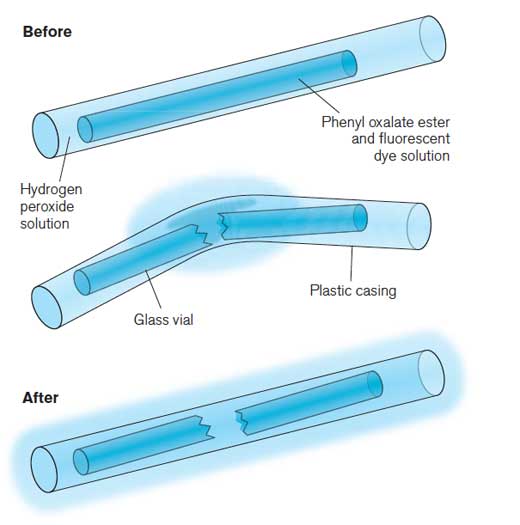
Chemiluminescence is a fascinating phenomenon where light is emitted as a result of a chemical reaction, rather than heat or electricity. It occurs when certain molecules undergo oxidation or reduction, releasing energy in the form of light. To create chemiluminescence, you will need chemicals such as luminol or hydrogen peroxide, along with a suitable activator and a fluorophore. Some common reactions that produce chemiluminescence include the reaction between luminol and hydrogen peroxide, or the oxidation of oxalate esters. Less commonly known chemiluminescent reactions include the reaction between luciferin and luciferase found in fireflies, or the reaction between dioxetanes and catalysts. Chemiluminescence finds applications in various fields, including forensic science, medical diagnostics, and environmental monitoring. It is also used in industries such as aerospace, automotive, and entertainment for lighting and decorative purposes. Exploring chemiluminescence can inspire creativity and ignite a sense of wonder in the beauty of science.
Safety Precautions and Equipment Needed
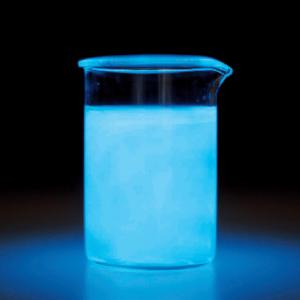
Illuminating Imaginations: Safety Measures for Chemiluminescence Experiments
When working with chemiluminescent reactions, it is crucial to prioritize safety. Always wear appropriate personal protective equipment (PPE) such as gloves and goggles to protect your skin and eyes. Work in a well-ventilated area or use a fume hood to avoid inhaling any potentially harmful fumes. Keep flammable materials away from the experiment and have a fire extinguisher nearby. It is also important to read and understand the safety data sheets (SDS) for all chemicals used. Follow proper waste disposal procedures for any leftover chemicals. Lastly, ensure that you have a first aid kit readily available in case of any accidents or injuries. By following these safety precautions, you can enjoy the wonders of chemiluminescence while keeping yourself and others safe.
Illuminating Imaginations: Essential Equipment for Creating Chemiluminescence
To conduct chemiluminescence experiments, you will need a few essential pieces of equipment. A dark room or space is ideal for observing the light emission. You will also need containers or test tubes to mix your reactants together. A light source, such as a flashlight or laser pointer, can be useful for illuminating the reaction and enhancing the glow. A digital camera or smartphone with long exposure settings can capture stunning images of the chemiluminescent light. Additionally, consider using safety goggles and gloves to protect yourself during the experiment. Having these basic equipment will ensure a successful and enjoyable chemiluminescence experience.
Illuminating Imaginations: Safety Measures for Chemiluminescence Experiments

To ensure safety during chemiluminescence experiments, it is essential to prioritize personal protective equipment (PPE) such as gloves and goggles, work in a well-ventilated area or use a fume hood, keep flammable materials away, have a fire extinguisher nearby, and follow proper waste disposal procedures. It is also crucial to read and understand the safety data sheets (SDS) for all chemicals used and have a first aid kit readily available. By following these precautions, you can enjoy the wonders of chemiluminescence while keeping yourself and others safe.
Illuminating Imaginations: Essential Equipment for Creating Chemiluminescence

Illuminating Imaginations: Essential Equipment for Creating Chemiluminescence
When it comes to creating mesmerizing chemiluminescence, having the right equipment is crucial. Here are some essential tools you’ll need:
- Chemiluminescent reagents: These are the chemicals that produce light when mixed together. Examples include luminol and hydrogen peroxide.
- Mixing containers: Use glass beakers or test tubes to safely combine the reagents.
- Protective gear: Wear gloves and goggles to protect yourself from any potential chemical splashes or spills.
- Light-blocking environment: Perform your experiments in a dimly lit room or use light-proof containers to enhance the visibility of the chemiluminescent reaction.
- Activators: Some reactions require an activator to initiate the chemiluminescence. Common activators include catalysts like iron salts or sodium hydroxide.
- Observation tools: Use a darkroom or a camera with long exposure settings to capture the glowing effects of your experiments.
By having these essential items on hand, you’ll be ready to create captivating displays of chemiluminescence that will truly illuminate imaginations.
Types of Chemiluminescent Reactions

Types of Chemiluminescent Reactions
Chemiluminescence can occur through various chemical reactions, each producing unique and mesmerizing light displays. Here are some common types of chemiluminescent reactions:
- Luminol Reaction: The reaction between luminol and hydrogen peroxide in the presence of a catalyst, such as iron salts or sodium hydroxide, produces a blue glow.
- Peroxyoxalate Reaction: When a mixture of an organic peroxide, an oxalate ester, and a fluorescent dye is combined, an orange or green chemiluminescent glow is emitted.
- Luciferin-Luciferase Reaction: This reaction involves the enzyme luciferase catalyzing the oxidation of luciferin, resulting in the emission of light. It is commonly found in fireflies and other bioluminescent organisms.
- Oxidation of Dioxetanes: Dioxetanes are highly reactive molecules that, upon oxidation, release energy in the form of light. This reaction is utilized in some chemiluminescent assays.
- Radical Reactions: Certain radical reactions can generate chemiluminescence, such as the reaction between luminol and a strong oxidizing agent like bleach.
By understanding these different types of chemiluminescent reactions, you can explore a wide range of possibilities for creating captivating light displays.
Illuminating Imaginations: Common Chemical Reactions for Chemiluminescence

There are several common chemical reactions that can produce chemiluminescence, including the luminol reaction, the peroxyoxalate reaction, the luciferin-luciferase reaction, the oxidation of dioxetanes, and certain radical reactions. These reactions result in mesmerizing light displays and can be explored for creating captivating chemiluminescent effects.
Illuminating Imaginations: Uncommon Yet Fascinating Chemiluminescent Reactions

Uncommon yet fascinating chemiluminescent reactions offer endless possibilities for captivating light displays. One such reaction is the bioluminescent reaction found in fireflies and certain marine organisms, where luciferin and luciferase produce light. Another unique reaction involves the use of photoluminescent materials, such as glow-in-the-dark paint or substances that absorb and emit light. Additionally, the reaction between hydrogen peroxide and potassium permanganate creates a stunning purple glow. Exploring these uncommon reactions can unleash creativity and inspire new ways to harness chemiluminescence for artistic or scientific endeavors. Whether it’s observing the mesmerizing glow of bioluminescent organisms or experimenting with unconventional materials, these uncommon chemiluminescent reactions provide an opportunity to illuminate imaginations in extraordinary ways.
Hands-On Chemiluminescent Experiments

Illuminating Imaginations: DIY Chemiluminescence Projects for Beginners
Looking to immerse yourself in the world of chemiluminescence? Here are some hands-on experiments perfect for beginners:
- Glow Stick Magic: Grab a few glow sticks and mix together the chemicals inside by gently snapping them. Watch as the colorful glow illuminates the darkness.
- Luminous Lemon: Cut a lemon in half and squeeze out the juice. Add a pinch of baking soda and observe the chemical reaction that produces a soft, yellow glow.
- Glowing Water: Dissolve a fluorescent dye tablet or highlighter ink in water. Shine a UV light on the water to witness its vibrant glow.
- Sparkling Snowflakes: Mix hydrogen peroxide with a few drops of dish soap in a spray bottle. Spritz the solution onto dry ice and marvel at the mesmerizing sparks.
Remember to follow safety precautions and have fun experimenting with these captivating chemiluminescent projects!
Illuminating Imaginations: DIY Chemiluminescence Projects for Beginners

Looking to immerse yourself in the world of chemiluminescence? Here are some hands-on experiments perfect for beginners:
1. Glow Stick Magic: Gently snap a few glow sticks to mix the chemicals inside and watch as the colorful glow illuminates the darkness.
2. Luminous Lemon: Squeeze the juice of a lemon into a bowl, add a pinch of baking soda, and observe the chemical reaction that produces a soft, yellow glow.
3. Glowing Water: Dissolve a fluorescent dye tablet or highlighter ink in water, then shine a UV light on it to witness its vibrant glow.
4. Sparkling Snowflakes: Mix hydrogen peroxide with dish soap in a spray bottle, then spray the solution onto dry ice and marvel at the mesmerizing sparks.
Remember to follow safety precautions and have fun experimenting with these captivating chemiluminescent projects!
Illuminating Imaginations: Advanced Chemiluminescence Experiments for Enthusiasts

For enthusiasts looking to dive deeper into the world of chemiluminescence, here are some advanced experiments that will inspire your imagination:
- Firefly Reaction: Mix luminol with hydrogen peroxide and a catalyst like potassium ferricyanide to witness a stunning blue glow reminiscent of fireflies.
- Glowing Gummy Bears: Soak gummy bears in a solution of hydrogen peroxide and potassium iodide, then watch as they emit a brilliant light.
- Bioluminescent Bacteria: Cultivate bioluminescent bacteria like Vibrio fischeri in a petri dish and observe their natural glow.
- Chemiluminescent Art: Use chemiluminescent compounds to create captivating artwork that glows in the dark.
Remember to always follow safety precautions and handle chemicals responsibly when conducting these advanced chemiluminescence experiments. Let your creativity shine with these thrilling projects!
Application of Chemiluminescence in Everyday Life
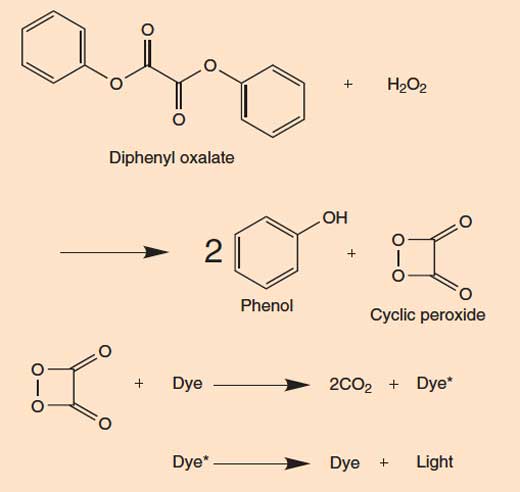
Chemiluminescence has numerous practical applications in everyday life, contributing to various industries and technologies. One common application is in glow sticks, where a chemical reaction between hydrogen peroxide and a fluorescent dye produces light. This makes glow sticks useful for emergency situations, parties, and even as entertainment at concerts.
Another application is in forensic science, where chemiluminescent reagents are used to detect blood at crime scenes. The reaction between luminol and hydrogen peroxide creates a blue glow when it comes into contact with the iron in hemoglobin, helping investigators identify potential evidence.
In the medical field, chemiluminescence is utilized for diagnostic tests such as immunoassays. These tests rely on the reaction between an enzyme-labeled antigen or antibody and a chemiluminescent substrate to produce light, allowing for the detection of specific diseases or conditions.
Additionally, chemiluminescence is employed in environmental monitoring, such as detecting pollutants in water or air. The reaction between certain compounds and contaminants can produce light that indicates the presence of harmful substances.
Overall, the practical applications of chemiluminescence demonstrate its widespread use and importance in various aspects of our daily lives.
Illuminating Imaginations: Real-World Uses of Chemiluminescence
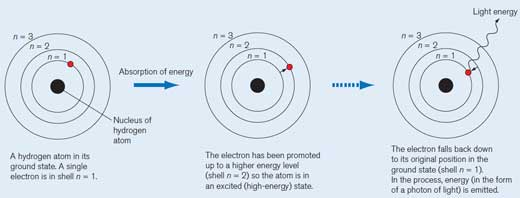
Chemiluminescence has numerous practical applications in everyday life. One common application is in glow sticks, which are used for emergency situations and entertainment. In forensic science, chemiluminescent reagents are used to detect blood at crime scenes. In the medical field, chemiluminescence is utilized for diagnostic tests. It is also employed in environmental monitoring to detect pollutants. Overall, the applications of chemiluminescence demonstrate its widespread use and importance in various aspects of our daily lives.
Illuminating Imaginations: How Chemiluminescent Technology Impacts Industries

Chemiluminescent technology has a significant impact on various industries. In the entertainment industry, it is used to create mesmerizing light shows and special effects. In the automotive industry, chemiluminescent coatings are applied to enhance visibility and safety. The military uses chemiluminescence for covert operations and signaling. In the field of biotechnology, chemiluminescent assays are employed for research and diagnostic purposes. Moreover, chemiluminescent materials are used in the production of glow-in-the-dark paints and dyes for textiles. This technology also finds applications in security, advertising, and emergency lighting systems. The versatility and practicality of chemiluminescence make it a valuable tool in enhancing visual experiences and improving safety in various sectors.
Conclusion
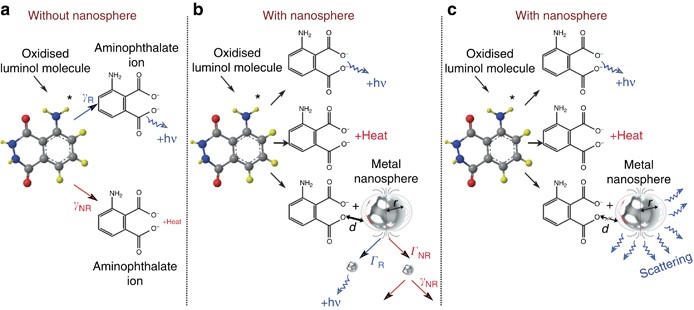
Illuminating Imaginations: Inspiring Creativity with Chemiluminescence
To conclude, chemiluminescence is a fascinating phenomenon that has captivated scientists and artists alike. Whether you’re a beginner looking to create your own light show or an enthusiast seeking advanced experiments, chemiluminescence offers endless possibilities for creativity. By understanding the science behind it and taking proper safety measures, you can embark on exciting hands-on projects that bring light and color to your imagination. In everyday life, chemiluminescent technology impacts industries such as entertainment, automotive, military, biotechnology, and more. Its versatility and practicality make it a valuable tool for enhancing visual experiences and improving safety. To continue your journey into the world of chemiluminescence, there are plenty of resources available for further learning. So go ahead, let your imagination shine bright with the magic of chemiluminescence.
Illuminating Imaginations: Inspiring Creativity with Chemiluminescence

Illuminating Imaginations: Inspiring Creativity with Chemiluminescence
To inspire creativity with chemiluminescence, you can embark on exciting hands-on projects that bring light and color to your imagination. By understanding the science behind chemiluminescence and taking proper safety measures, you can create mesmerizing light shows. For beginners, start with DIY projects such as mixing hydrogen peroxide and luminol to create a glowing solution. As an enthusiast, explore advanced experiments like using different catalysts to enhance the intensity and duration of the light emission. Chemiluminescent reactions are found in everyday life, impacting industries such as entertainment, automotive, military, and biotechnology. This technology enhances visual experiences and improves safety. To continue your journey into the world of chemiluminescence, there are plenty of resources available for further learning. Let your imagination shine bright with the magic of chemiluminescence.
Illuminating Imaginations: Resources for Further Learning

To continue your journey into the world of chemiluminescence, there are plenty of resources available for further learning. You can explore books and scientific articles that Dive deeper into the principles and applications of chemiluminescence. Online platforms offer courses and tutorials taught by experts in the field, providing hands-on experience and practical knowledge. Additionally, attending workshops or joining scientific communities allows you to connect with like-minded individuals who share your passion for chemiluminescence. Engaging in discussions, sharing ideas, and collaborating on projects can further enhance your understanding and creativity in this fascinating field. Keep exploring, learning, and experimenting to unlock the full potential of chemiluminescence and ignite your imagination with its mesmerizing glow.
